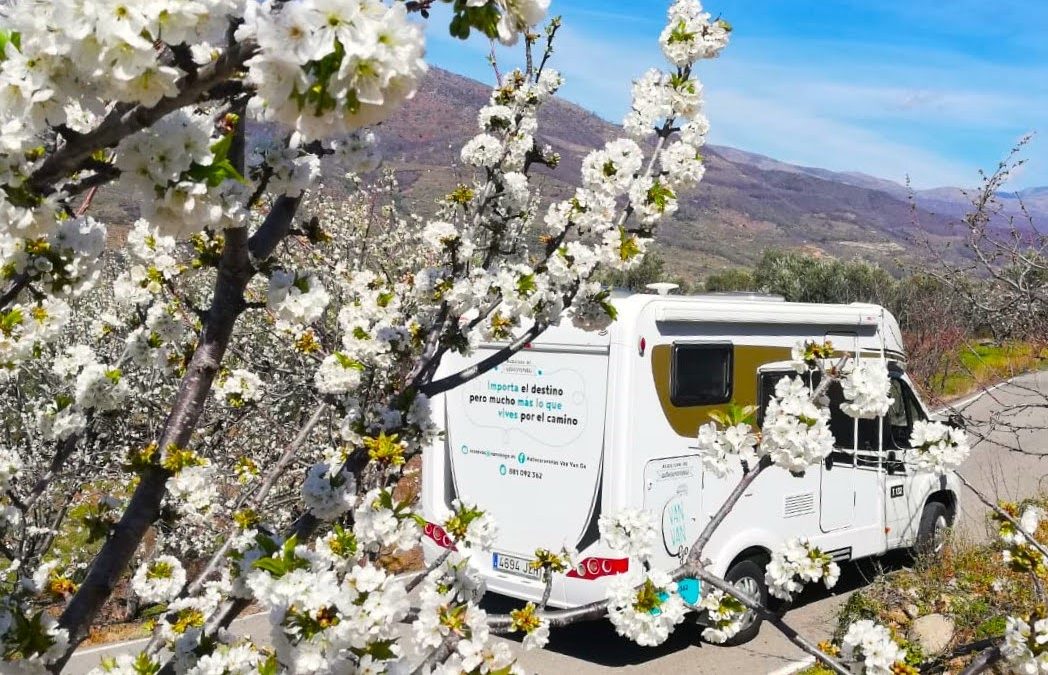Motorhomes: A greener option than car and hotel, according to Aseicar
Motorhome lovers are in luck. A recent ASEICAR report reveals that caravanning is the most sustainable way to travel 🌿. This is because the carbon footprint generated by motorhomes is smaller than that left behind by conventional tourism.
It is clear to all of us that traveling by motorhome is synonymous with freedom and getting to know new places. From now on, thanks to the report prepared by ASEICAR, we also know that it helps us to take care of the environment. Media of the stature of Europa Press or COPE have already echoed this news, so we could not stay behind.
What is the carbon footprint?
In case you didn’t already know, the carbon footprint is used to measure the total impact that greenhouse gases (GHG) have on the environment. Their emission traps and absorbs atmospheric heat, causing the greenhouse effect. This, in principle, is not a bad thing, because it helps to maintain the planet’s temperature. However, taken to the extreme, it contributes to accelerating global warming.
We must understand the carbon footprint as a tool that helps us to quantify the environmental impact of our actions. The unit used for this is the ton of carbon dioxide equivalent (CO2-eq).
Nitrous oxide, methane, carbon dioxide… all individual and industrial activities generate these gases, either directly or indirectly. Their potential impact on global warming is measured in GWP (Global-Warming Potential), which takes carbon dioxide as a reference (whose standard value is equal to 1) and the unit used is the ton of carbon dioxide equivalent (CO2-eq).
Carbon footprint: a growing concern for the tourism sector
It is clear that industrialization has intensified the negative effects of GHG emissions on the environment. At this point, we cannot ignore the fact that the tourism industry is one of the most polluting industries, accounting for 5% of the total (UNWTO, 2007).
The truth is that we cannot live without tourism. On the one hand, its economic importance is undeniable; in fact, if we limit ourselves to the case of Spain, it is the sector that contributes the most wealth to the national economy: no less than 14.6% of GDP. On the other hand, traveling provides us with a series of psychological benefits that are essential for a healthy and balanced life (it reduces stress, stimulates creativity, helps us to socialize, etc.).
As with other aspects of our lives, we have no choice but to learn to harmonize our need to travel with respect for the environment. This is where ecotourism comes into play… and we now know that motorhomes play a very important role in it.

What does the ASEICAR report say about motorhomes and carbon footprint?
ASEICAR (Asociación Española de la Industria y Comercio del Caravaning) is an institution created in 1988 to represent Spanish companies in the motorhome sector. As a result of its activity, this organization often presents various documents related to the sector (guides, legislation, manuals and the report we are discussing today). The report is entitled Product carbon footprint of a typical motorhome model and comparative analysis with respect to other forms of tourism. It is a document drafted in Valencia last September 2023 and presented at the Barcelona Caravaning Show held in October 2023.
The objective of this report is to provide a comparative study of the carbon footprint generated by different tourism modalities that include transportation and lodging. It presents three possible vacation scenarios: a weekend (600 km), a week (2,500 km) and a fortnight (5,000 km). Dr. Javier Pérez Rodríguez (Professor of the ETSII of the UPM) was the external reviewer, which guarantees its impartiality.
What is the carbon footprint generated by the average motorhome?
The report concludes that standard motorhomes produce a carbon footprint of 0.139 kg CO2-eq per kilometer traveled. Taking into account that this type of vehicle can travel around 300,000 km during its lifetime, its total environmental impact would be 41,400 kg CO2-eq.
Of course, we must contextualize the above on a case-by-case basis. After all, a well-maintained motorhome will pollute less than one that has not been sufficiently cared for. Another determining factor will be the use of local raw materials and sustainable production processes.
Consequently, beyond the carbon footprint produced by standard motorhomes, the greater or lesser environmental impact of a motorhome is a matter of two things. Certainly, both the manufacturer and the driver play a decisive role in making this type of vehicle more or less polluting.
Comparison of motorhomes with other modes of tourism (transportation + lodging)
The highlight of the report comes when it compares the carbon footprint produced by motorhomes with other types of tourism that combine transport and accommodation. In almost all the scenarios that arise, the motorhome proves to be the option with the lowest environmental impact.
| Tourist typology | Weekend | 7 days | 15 days |
| Car + bungalow | 112,81 kg CO2eq | 458,00 kg CO2eq | — |
| Car + hotel | 116,49 kg CO2eq | 469,06 kg CO2eq | 952,12 kg CO2eq |
| Train + hotel | — | 53,15 kg CO2eq | — |
| Air + hotel | — | — | 1063,45 kg CO2eq |
| Motorhome | 88,96 kg CO2eq | 364,24 kg CO2eq | 734,23 kg CO2eq |
In the comparative study there is only one option that is more sustainable than caravanning: the option that combines train and hotel. The electrification of the tracks and the fact that it is a public transport (pollution is prorated among all passengers) are behind it. On the other hand, the alternative that combines airplane and hotel is by far the most polluting.
In view of the report, it is clear that GHG emissions from motorhomes are lower than those generated by combining car or plane with lodging. This is because they balance the emissions from transport (higher) with those from overnight stays (lower). The environmental impact will be even lower in the case of long trips (more overnight stays) or short distances.
Specifically, the savings in kilos of CO2 brought about by motorhomes range from 22% (7 days) to 30% (15 days).
Caravanning: sustainable tourism by nature
Apart from the quantitative evidence, it is clear that traveling by motorhome is a qualitatively ecological way of traveling. The report arrives at this conclusion when it states that this type of tourism intensifies contact with nature.
Those who travel in a motorhome are well aware of the cost and effort involved in transporting resources such as water and electricity. As a result, their consumption becomes more rational and therefore more sustainable.
Indeed, the ASEICAR report is very good news for all motorhome enthusiasts. This rigorous document confirms that traveling in them means betting on tourism that generates less carbon footprint. Can you think of a more pleasant way to take care of the planet?

